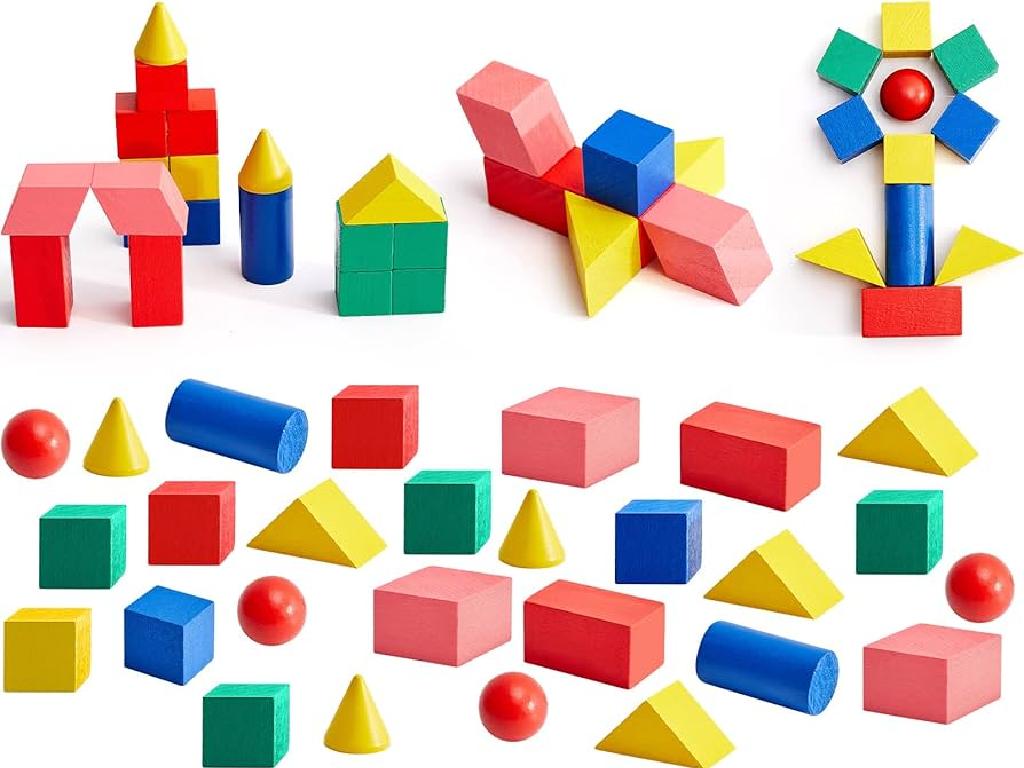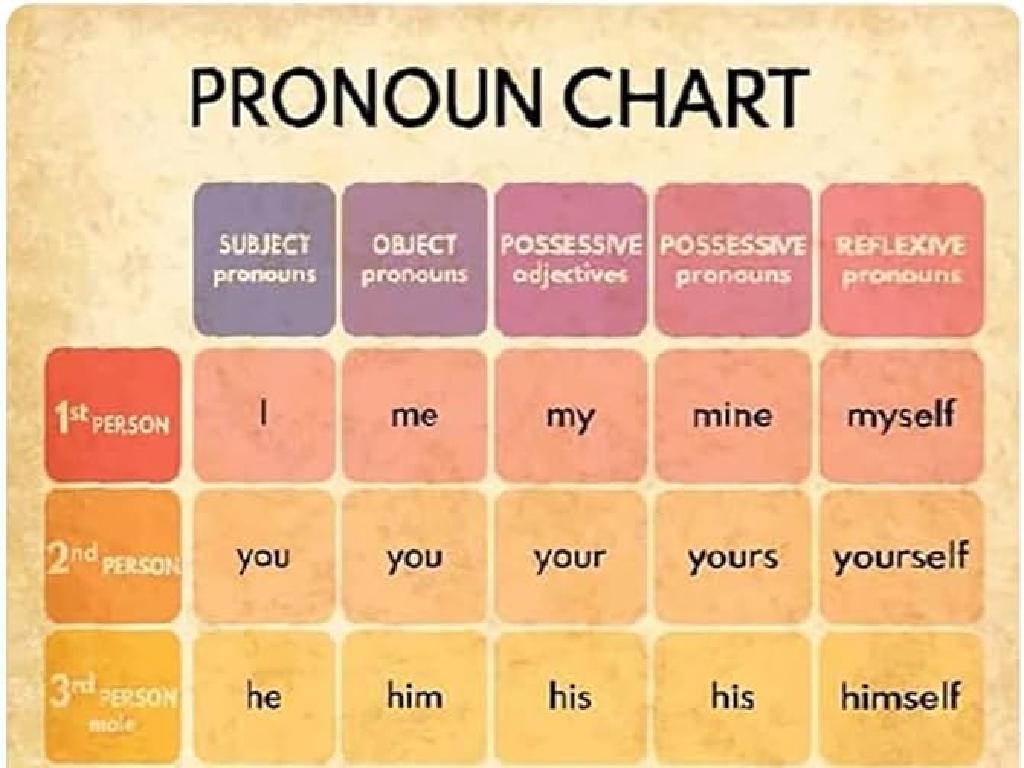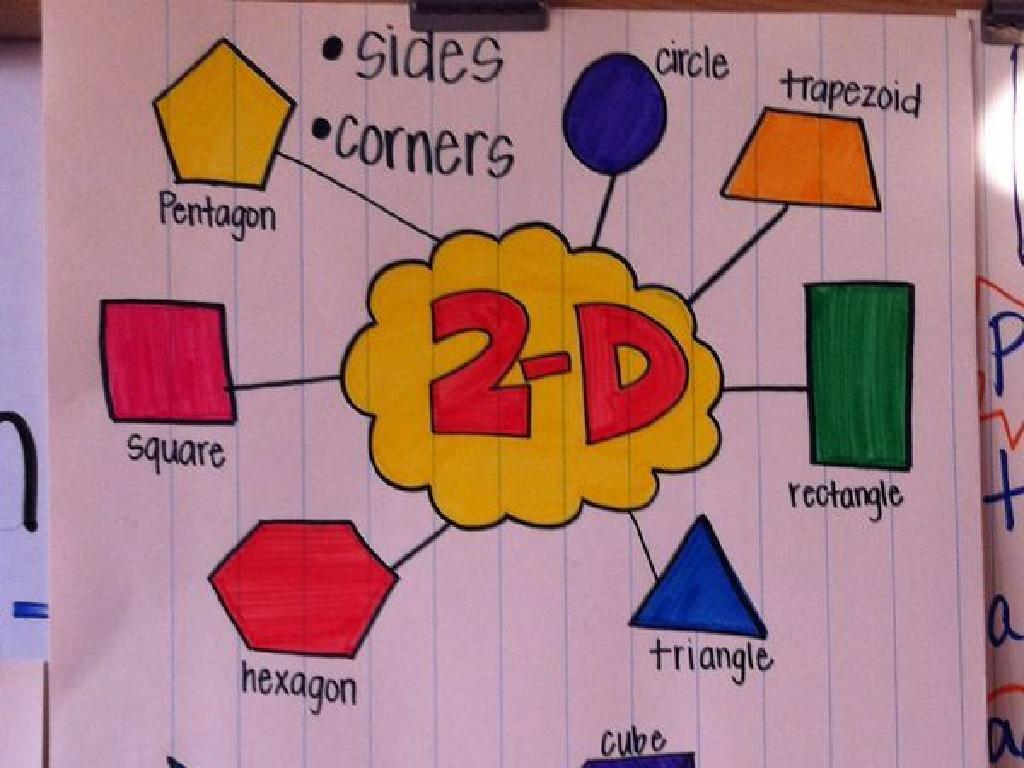Commas With The Names Of Places
Subject: Language arts
Grade: Fourth grade
Topic: Commas
Please LOG IN to download the presentation. Access is available to registered users only.
View More Content
Commas and Places: Learning Punctuation
– What’s a comma?
– A comma is a pause or break in a sentence
– Why punctuation matters
– Commas in place names
– We use commas to separate city and state, or city and country
– Practice examples
– Let’s look at: ‘Orlando, Florida’ and ‘Paris, France’
|
This slide introduces the concept of commas, particularly in the context of geographical names. Start by explaining that a comma acts like a short pause when we read and is crucial for understanding a sentence correctly. Emphasize the importance of punctuation in writing for clear communication. Today’s lesson will focus on using commas to correctly write the names of places, such as separating the name of a city from the state or country it’s in. Provide practice examples and encourage students to come up with their own, ensuring they understand the concept through application.
Commas in the Names of Places
– Commas organize lists
– Commas separate dates
– Commas in addresses
– Like a pause in a sentence, commas in addresses help us read them clearly.
– Practice with place names
– Let’s locate commas in addresses of famous landmarks!
|
This slide introduces students to the use of commas in various contexts, with a focus on their role in addresses, which is our main topic. Start by discussing how commas help organize items in a list and separate days from months in dates. Then, lead into the main topic by explaining how commas in addresses help clarify the different parts, such as the street, city, and state. For practice, students can work on identifying the commas in addresses of well-known places or even their own addresses. This will prepare them for understanding how commas are used to make reading and understanding location information easier.
Commas with the Names of Places
– Separate city and state with a comma
– Separate city and country with a comma
– Example: Orlando, Florida
– Orlando is a city, Florida is the state
– Example: Paris, France
– Paris is the city, France is the country
|
This slide introduces the concept of using commas to correctly write the names of places, specifically focusing on the separation of city and state, as well as city and country. It’s important to explain to students that commas help clarify the different parts of a location. Use the examples provided to show how commas are placed between the names of the city and the larger area it’s a part of, whether that’s a state or a country. Encourage students to practice with additional examples and to always remember to use a comma when writing city and state or city and country together.
The Importance of Commas in Place Names
– Commas clarify meanings
– They act like a pause in a sentence to separate items
– Lack of commas causes confusion
– Examples make it clear
– For example: ‘Dallas, Texas’ vs ‘Dallas Texas’
– Practice using commas
– We’ll write sentences with place names and insert commas
|
This slide emphasizes the importance of using commas, especially when writing names of places. Commas serve as a tool to clarify the meaning of sentences by indicating a pause or separation of ideas. Without proper comma usage, the reader might misinterpret the text, leading to confusion. By providing examples, such as the difference between ‘Dallas, Texas’ and ‘Dallas Texas’, students can visually see the role commas play. The class will engage in an activity where they practice inserting commas into sentences that include place names, reinforcing the lesson and ensuring they understand how to use commas correctly in this context.
Using Commas with Place Names
– Commas in city and state names
– Separate city and state: Springfield, Illinois
– Commas in city and country names
– Separate city and country: Berlin, Germany
– Why commas are important
– Practice with examples
– ‘I live in Springfield, Illinois’ shows clear separation
|
This slide introduces the use of commas in geographical names, which is an important skill for clear written communication. Students will learn that commas are used to separate the names of cities from states and countries. Emphasize the clarity that commas add to sentences, preventing confusion. For example, without commas, ‘Springfield Illinois’ could be misread as a single, compound name. Provide students with written examples and ask them to insert commas where necessary. Encourage them to explain why the commas are needed and how they help the reader understand the sentence better. As an activity, students can write sentences about places they’ve visited or would like to visit, using commas correctly.
Your Turn to Try: Commas in Place Names
– Activity: Add commas to place names
– Partner up to correct sentences
– Work together and discuss why commas are needed
– Share your corrected sentences
– Present your sentences and explain your comma placement
– Learn from each other’s work
– Listen to classmates and understand different comma uses
|
This slide introduces an interactive class activity focused on the practical application of commas in geographical names. Students are to pair up and work collaboratively to identify and correct sentences that require commas in place names. Afterward, they will share their corrected sentences with the class, explaining their reasoning for the comma placement. This exercise not only reinforces the rules of comma usage but also fosters peer learning and public speaking skills. As a teacher, facilitate the activity by providing example sentences and guiding the students through the process. Encourage them to explain their thought process and provide positive feedback. Possible activities could include correcting sentences from a worksheet, creating their own sentences, or finding examples in a text.
Class Activity: Creating a Fictional Postcard
– Design a postcard for a made-up location
– Compose a message with proper comma use
– Use commas to separate city and state, or city and country
– Illustrate and label a map with commas
– Include commas between different places on your map
– Share your postcard with the class
|
This activity is designed to help students practice using commas in the context of places. Students will create a postcard for a fictional place, which allows them to be creative while learning. They should write a message on the postcard, ensuring they use commas correctly when mentioning places, such as ‘Greetings from Sunnyville, the warmest city in Wonderland!’ When drawing their map, students should label fictional places and use commas to separate them, like ‘Mermaid Lagoon, Pirate Cove, Lost Jungle.’ After completing their postcards, students will present them to the class, explaining their use of commas. This will reinforce their understanding and give them a chance to see how their classmates approached the task.
Wrapping Up: Commas in Place Names
– Recap: Commas with places
– Remember, we use commas to separate city and state, and after the state if the sentence continues.
– Punctuation for clear communication
– Correct punctuation helps us understand the meaning of sentences better.
– Next lesson: Commas in complex sentences
– We’ll explore how commas help join ideas in longer sentences.
– Practice makes perfect!
|
As we conclude today’s lesson, remind students of the importance of using commas when writing names of places, such as in addresses or when mentioning a city and state in a sentence. Emphasize that proper punctuation is crucial for clear communication, as it helps readers understand where one part of a location ends and another begins. Preview the next lesson by telling students that they will learn about using commas in complex sentences, which will build on what they’ve learned today. Encourage them to practice writing sentences with place names and commas to reinforce their learning.






